
SEMICONDUCTORS
Scope & Guideline
Unveiling the mysteries of magnetic materials.
Introduction
Aims and Scopes
- Material Science and Engineering:
Research articles often delve into the synthesis, growth, and characterization of semiconductor materials, including heterostructures, nanostructures, and thin films, with a focus on optimizing their physical properties for electronic and optoelectronic applications. - Optoelectronic Devices:
The journal covers a wide array of optoelectronic devices such as lasers, photodetectors, solar cells, and LEDs, focusing on their design, performance evaluation, and underlying physical principles. - Quantum and Nanoelectronics:
Papers frequently explore quantum phenomena in semiconductor systems, such as quantum wells, quantum dots, and two-dimensional materials, highlighting their implications for next-generation electronic devices. - Characterization Techniques:
The journal also emphasizes advanced characterization techniques for semiconductor materials, including photoluminescence, electron microscopy, and electrical measurement methods, to understand material properties and device performance. - Theoretical and Computational Studies:
Research often includes theoretical models and simulations that provide insights into the electronic properties of semiconductor materials, aiding in the design and optimization of devices.
Trending and Emerging
- 2D Materials and Heterostructures:
There is a notable increase in research on two-dimensional materials and their heterostructures, driven by their unique electronic and optical properties, which are essential for next-generation devices. - Sustainable and Green Technologies:
Emerging studies focus on sustainable semiconductor technologies, such as environmentally friendly materials for solar cells and energy-efficient devices, reflecting a growing concern for sustainability in semiconductor research. - Advanced Characterization Techniques:
The use of sophisticated characterization techniques, such as synchrotron radiation and advanced electron microscopy, is becoming more prevalent, enabling deeper insights into material properties and device behaviors. - Quantum Computing and Spintronics:
Research related to quantum computing and spintronics is gaining momentum, highlighting the potential of semiconductors in these cutting-edge fields, which aim to revolutionize information processing and storage. - Integration of AI in Semiconductor Design:
The integration of artificial intelligence in semiconductor design and fabrication processes is emerging as a significant trend, providing innovative solutions for optimizing device performance and manufacturing efficiency.
Declining or Waning
- Traditional Bulk Materials:
Research on conventional bulk semiconductor materials appears to be decreasing, as there is a growing interest in novel materials and nanostructures that offer enhanced performance for modern applications. - Low-Dimensional Structures:
Although low-dimensional materials like quantum dots and nanowires have historically been popular, recent trends indicate a shift towards more complex heterostructures and integration with two-dimensional materials, leading to a decline in standalone studies of simple low-dimensional systems. - Classic Device Fabrication Techniques:
The focus on traditional fabrication techniques, such as standard photolithography, is diminishing in favor of advanced methods like atomic layer deposition and 3D printing technologies, which are gaining traction for their precision and capabilities.
Similar Journals

ACTA PHYSICA POLONICA A
Championing Research Excellence since 1996ACTA PHYSICA POLONICA A is a distinguished peer-reviewed journal published by the Polish Academy of Sciences Institute of Physics, offering a platform for disseminating cutting-edge research in the field of physics and astronomy. With an ISSN of 0587-4246 and an E-ISSN of 1898-794X, this journal has been a staple for scholars since its inception, converging its publication years from 1996 to 2024. Despite its current Q4 classification in the Physics and Astronomy (miscellaneous) category, ACTA PHYSICA POLONICA A provides valuable insights and breakthroughs addressing various aspects of general physics. Researchers, professionals, and students will find a wealth of knowledge within its pages, even as it operates in an evolving academic landscape. While subscription options exist, the journal aims to foster collaboration and knowledge exchange in the physics community, making it a vital resource for those seeking to stay at the forefront of research advancements.

Physics and Chemistry of Solid State
Fostering Interdisciplinary Dialogue for Tomorrow's ScientistsPhysics and Chemistry of Solid State is a distinguished open access journal published by Vasyl Stefanyk Precarpathian National University in Ukraine, dedicated to advancing research in the fields of condensed matter physics, materials science, and physical and theoretical chemistry. Since its inception in 2000, the journal has provided a platform for the dissemination of innovative ideas and original research findings, contributing significantly to the global scientific community. With a variety of access options, it facilitates the sharing of knowledge and collaboration among researchers worldwide. The journal has garnered recognition with respectable rankings in Scopus, positioning itself among the significant publications in its domain, particularly noted for its contributions to materials science and condensed matter physics. As it moves through its converged years from 2018 to 2024, Physics and Chemistry of Solid State aims to foster interdisciplinary dialogue and prepare the next generation of scientists to tackle complex challenges in solid-state research.
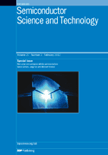
SEMICONDUCTOR SCIENCE AND TECHNOLOGY
Illuminating the future of electronics with groundbreaking insights.Semiconductor Science and Technology is a pivotal journal in the fields of condensed matter physics, electrical and electronic engineering, and materials science, published by IOP Publishing Ltd. With an ISSN of 0268-1242 and an E-ISSN of 1361-6641, this esteemed journal has been disseminating groundbreaking research since 1986 and is set to continue through 2024. Recognized in the latest categorizations, it holds a notable Q2 ranking in Condensed Matter Physics, Electrical and Electronic Engineering, and Materials Chemistry, alongside a Q3 ranking in Electronic, Optical, and Magnetic Materials, highlighting its significant contribution to the advancement of these disciplines. Although it does not operate under an open access model, the journal provides critical access options for researchers and professionals seeking to foster innovation and collaboration within the semiconductor community. As a vital resource, Semiconductor Science and Technology not only supports the dissemination of high-quality research but also serves as a platform for emerging trends and developments that are shaping the future of semiconductor technology.
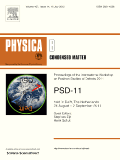
PHYSICA B-CONDENSED MATTER
Driving Technological Innovations in Electronic and Optical MaterialsPHYSICA B-CONDENSED MATTER, published by Elsevier, stands as a leading journal within the field of condensed matter physics, electrical and electronic engineering, as well as electronic, optical, and magnetic materials. With an impressive impact factor and a solid ranking in various Scopus categories—Q2 for 2023 in Condensed Matter Physics, Electrical and Electronic Engineering, and Electronic, Optical, and Magnetic Materials—this journal offers a vital platform for advancing research and fostering collaboration among academics and industry professionals. The scope of the journal encompasses a wide range of topics, including fundamental research findings, applications, and technological innovations in condensed matter. While it does not currently provide open access, PHYSICA B-CONDENSED MATTER is highly regarded for its rigorous peer-review process and dedication to high-quality scholarship, making it an indispensable resource for researchers, professionals, and students keen on exploring the complexities and advancements in materials science. Submissions are welcomed from a global community of scholars, contributing to an ongoing discourse in this dynamic and rapidly evolving field.
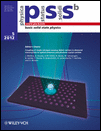
PHYSICA STATUS SOLIDI B-BASIC SOLID STATE PHYSICS
Fostering Insights into the Heart of Material SciencePHYSICA STATUS SOLIDI B-BASIC SOLID STATE PHYSICS, published by Wiley-VCH Verlag GmbH in Germany, is an esteemed journal within the condensed matter physics sphere, covering pivotal advancements in basic solid state physics. With a rich history dating back to 1961, it serves as a scholarly platform for researchers, professionals, and students alike, providing insights into the fundamental properties and applications of electronic, optical, and magnetic materials. The journal currently holds a respectable Q3 ranking in both Condensed Matter Physics and Electronic, Optical, and Magnetic Materials as of 2023, indicating its impactful contributions to these fields despite its competitive landscape. While it does not offer open access, its comprehensive research findings are critical for those engaged in innovative material science research. With a convergence period extending to 2024, PHYSICA STATUS SOLIDI B continues to play a significant role in facilitating knowledge exchange and fostering advancements in solid state physics.
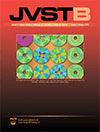
JOURNAL OF VACUUM SCIENCE & TECHNOLOGY B
Fostering Collaboration in Cutting-edge Research and DevelopmentJOURNAL OF VACUUM SCIENCE & TECHNOLOGY B, published by the AIP Publishing, serves as a vital platform for the dissemination of research in the field of vacuum science and technology. With an ISSN of 2166-2746 and E-ISSN of 2166-2754, this peer-reviewed journal covers a wide array of topics, including condensed matter physics, electrical and electronic engineering, and various materials sciences, underscored by its Q3 quartile rankings across multiple categories in 2023. Although currently operating under a subscription model, the journal is recognized for its robust editorial standards and contribution to advancements in instrumentation and process technology, making it an essential resource for researchers and professionals seeking to stay at the forefront of the field. The journal's comprehensive approach addresses both theoretical and practical aspects of vacuum technology, fostering innovation and collaboration among the academic community. Additionally, the journal spans converged years of research from 1991 to 1992 and 2009 to 2024, reflecting its dynamic evolution and relevance in addressing contemporary scientific inquiries.
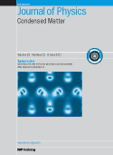
JOURNAL OF PHYSICS-CONDENSED MATTER
Innovating Research for a Solid-State Future.JOURNAL OF PHYSICS-CONDENSED MATTER, published by IOP Publishing Ltd, stands as a premier platform for the dissemination of impactful research in the fields of condensed matter physics and materials science. Since its inception in 1989, this journal has successfully bridged the gap between fundamental and applied research, delivering cutting-edge findings pertinent to both the academic community and industry professionals. Ranking in the Q2 category for both Condensed Matter Physics and Materials Science, it holds a respectable position within the scientific community, as evidenced by its Scopus rankings. With a commitment to fostering innovative research and promoting open dialogue, the journal offers a substantial collection of articles that contribute to the evolving landscape of materials science and physics. Researchers and students are encouraged to engage with the journal’s rich content, which not only enhances their academic pursuits but also plays a crucial role in advancing technologies based on solid-state materials.

Semiconductor Physics Quantum Electronics & Optoelectronics
Transforming Ideas into Impactful DiscoveriesSemiconductor Physics Quantum Electronics & Optoelectronics, published by the NATL ACAD SCIENCES UKRAINE, INST SEMICONDUCTOR PHYSICS, stands as a significant platform in the fields of semiconductor physics, quantum electronics, and optoelectronics. Since its transition to Open Access in 1998, the journal has facilitated widespread dissemination of innovative research, advancing our understanding of critical applications in technology and materials science. Based in Ukraine, this journal embraces a global readership, supporting researchers and professionals aiming to share valuable findings in a rapidly evolving scientific landscape. With a solid reputation reflected in its category quartiles—including Q4 in Atomic and Molecular Physics, Q3 in Electrical and Electronic Engineering, and Q4 in Electronic, Optical and Magnetic Materials—the journal remains committed to enhancing the visibility and impact of contemporary research. Spanning 2019 to 2024, it invites submissions that contribute to the ongoing dialogue in these pivotal areas, ensuring that new insights reach the academic community swiftly and effectively.

Materials Letters-X
Advancing the Frontiers of Materials ScienceMaterials Letters-X, published by ELSEVIER, is an esteemed open-access journal dedicated to the rapid communication of research in the fields of Condensed Matter Physics, Materials Science, Mechanical Engineering, and Mechanics of Materials. Launched in 2019, this journal has quickly established itself within the academic community, achieving Q3 quartile rankings in several categories according to the 2023 metrics. The journal's impactful contributions are reflected in its Scopus rankings, notably within Mechanical Engineering (Rank #308) and Mechanics of Materials (Rank #199). The open-access model promotes widespread dissemination and accessibility, ensuring that cutting-edge advancements in material science are readily available to researchers, professionals, and students worldwide. As it continues to grow, Materials Letters-X aims to inspire innovation and collaboration across disciplines, making it a pivotal resource for those engaged in material research and applications.
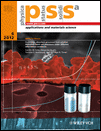
PHYSICA STATUS SOLIDI A-APPLICATIONS AND MATERIALS SCIENCE
Shaping the future of engineering and materials research.PHYSICA STATUS SOLIDI A-APPLICATIONS AND MATERIALS SCIENCE, published by WILEY-V C H VERLAG GMBH, stands as a prominent journal in the fields of condensed matter physics, materials science, and engineering. With an ISSN of 1862-6300 and E-ISSN 1862-6319, this journal has been actively contributing to scientific discourse since its inception. The journal currently holds a respectable Q2 ranking across several categories including Electrical and Electronic Engineering and Materials Chemistry, demonstrating its significance in advancing research and development within these domains. Although it does not offer open access, the journal ensures high-quality peer-reviewed content that is critical for researchers and professionals aiming to stay at the forefront of materials science innovations. The journal’s convergence years, extending from 2005 to 2024, reflects its ongoing commitment to publishing impactful research. By facilitating discussions on applications and advances in materials science, PHYSICA STATUS SOLIDI A continues to be an essential resource for those striving to contribute to this dynamic field.